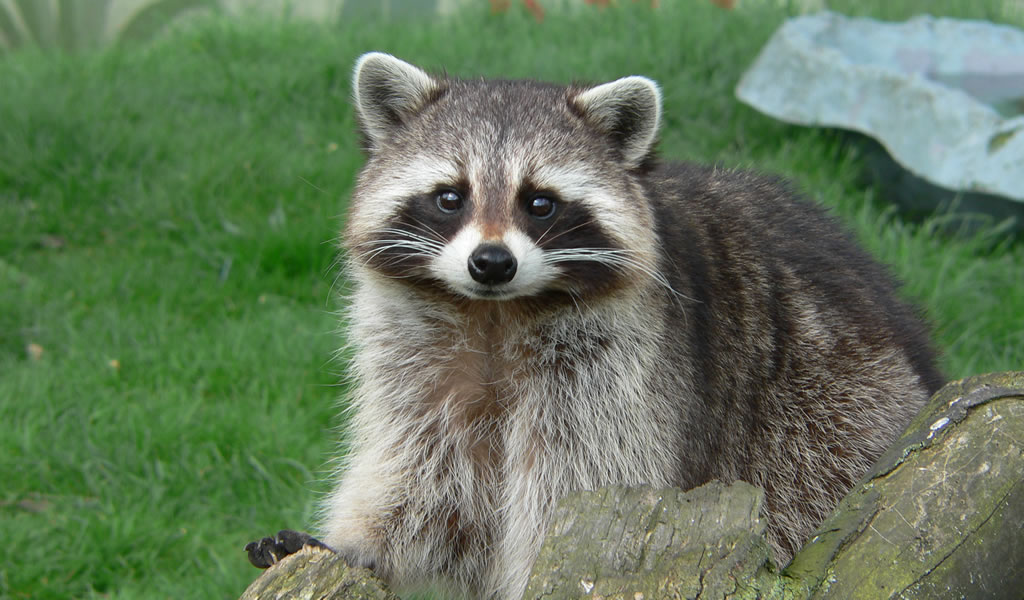Raccoons are mammals. They can be found anywhere in North America. Their fur is thick and dense which helps them protect themselves from cold weather.
Their whole body is predominantly grey except from their most noticeable characteristics, their mask like faces. Their tail has darker stripes contrasting their grey coats.
The raccoon are omnivores and their diet is quite impressive when it comes to its variety. They eat almost everything. From critters close to water like crabs, frogs, fish, snails to bugs, insects, they also eat vegetables. Although they are not the best hunters, they can catch small rodents like mice, squirrels and rats.
Raccoons are solitary animals and can only be seen in groups during mating season or when the females raise their offspring.
[ad size=”skyscraper” align=”left” ]
The average size of a racoon is 30 inches in length and they weigh around 20 pounds with some larger specimens being up to 30 and even 40 pounds. Their weight and size depends on food availability and the habitat they live in . There have been some cases where they have weighed up to 60 pounds.
Young raccoons are called kits, male raccoons are called boar and the females are called sow.
Raccoons can live up to 20 years in captivity but have a life expectancy of only 3 years in the wild.
The raccoon population can be quite large in urban areas and in some cases they become a nuisance.
Raccoons don’t migrate or hibernate so they can be seen all year long. Although they have a tendency to stay in their dens and burrows for longer periods of time should the weather get too cold.
One fun raccoon fact is found in its name; it’s an adapted word from the native Powhatan and means “one who rubs, scrubs and scratches with its hands”.
If you have seen this animals close to your property be aware that these funny looking creatures can be dangerous to human. Besides their sometimes aggressive behaviour they are known carriers of diseases like rabies. It is also important to teach your children that even though they look a lot like pets, they are in fact wild animals and should be treated accordingly.
There are some steps you can follow to reduce the likelihood that racoons stay on your property:
- Keep your pet food indoors, including food and water bowls
- Make sure your trash bins are not easily accessible
- Close all windows and other possible points of access to your house, attic, garage or sheds.
If you want to know more, check out our article how to get rid of raccoons.
If you find these raccoon facts interesting, please share them on Facebook and Twitter.

